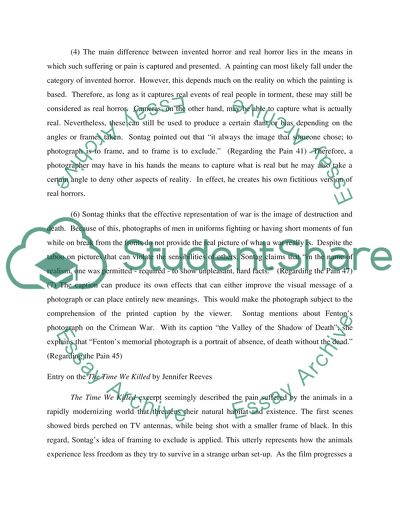Cite this document
(Entry on Susan Sontags Regarding the Pain of Others Literature review Example | Topics and Well Written Essays - 1500 words - 1, n.d.)
Entry on Susan Sontags Regarding the Pain of Others Literature review Example | Topics and Well Written Essays - 1500 words - 1. https://studentshare.org/psychology/1738141-strategies-of-alterity
Entry on Susan Sontags Regarding the Pain of Others Literature review Example | Topics and Well Written Essays - 1500 words - 1. https://studentshare.org/psychology/1738141-strategies-of-alterity
(Entry on Susan Sontags Regarding the Pain of Others Literature Review Example | Topics and Well Written Essays - 1500 Words - 1)
Entry on Susan Sontags Regarding the Pain of Others Literature Review Example | Topics and Well Written Essays - 1500 Words - 1. https://studentshare.org/psychology/1738141-strategies-of-alterity.
Entry on Susan Sontags Regarding the Pain of Others Literature Review Example | Topics and Well Written Essays - 1500 Words - 1. https://studentshare.org/psychology/1738141-strategies-of-alterity.
“Entry on Susan Sontags Regarding the Pain of Others Literature Review Example | Topics and Well Written Essays - 1500 Words - 1”. https://studentshare.org/psychology/1738141-strategies-of-alterity.


